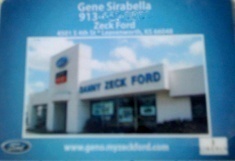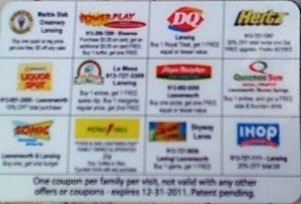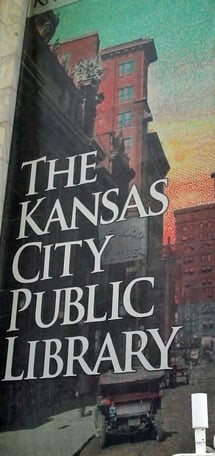Here's another Blogapalooza post from one of Max Utsler's students, D. Mark Dunn. He's a broadcast journalist and communications professional who is current working on his MS, Journalism / Marketing Communications at the University of Kansas. Today's he's tackling a couple of improvement ideas for a much maligned networking and marketing tool - the business card!
 Despite increasing communication online, many professionals still use a business card more than any other single marketing tool. Obviously, a business card features the essentials including your name, organization and contact information. In addition to the basics, you may see a pretty logo, fancy graphic design or colors. Beyond that, it seems rare to come across a business card worth keeping outside the value of “easy” access to that person when needed. Well, I guess a business card could have staying power if you’re in need of a bookmark or a fridge magnet—possibly featuring the schedule of a local sports team. The other day though, I came across a pretty creative idea for a business card while helping my wife do some car shopping. At least it’s something I’ve never seen done with this marketing tool.
Despite increasing communication online, many professionals still use a business card more than any other single marketing tool. Obviously, a business card features the essentials including your name, organization and contact information. In addition to the basics, you may see a pretty logo, fancy graphic design or colors. Beyond that, it seems rare to come across a business card worth keeping outside the value of “easy” access to that person when needed. Well, I guess a business card could have staying power if you’re in need of a bookmark or a fridge magnet—possibly featuring the schedule of a local sports team. The other day though, I came across a pretty creative idea for a business card while helping my wife do some car shopping. At least it’s something I’ve never seen done with this marketing tool.
One of the car salesmen handed us a business card, similar in look and feel to a credit card. The front provided contact basics, but the back of the card contained discount coupons to a dozen different local businesses. It drew my interest and led me to examine each discount offer individually. It seems like a pretty good idea to include discount coupons, but I do think the cross-promotion strategy could use improvement.
 Eight of the 12 discount coupons offered specials at restaurants or food specialty places. The other four were for a liquor store, a family entertainment venue, a bowling alley, and a rental car company. All of the deals appear to provide a fairly good value. But it seems that only one of the 12 businesses effectively targets car shoppers.
Eight of the 12 discount coupons offered specials at restaurants or food specialty places. The other four were for a liquor store, a family entertainment venue, a bowling alley, and a rental car company. All of the deals appear to provide a fairly good value. But it seems that only one of the 12 businesses effectively targets car shoppers.
The shotgun approach may relate to the wide-ranging demographics and psychographics of car shoppers. Lob a variety of discount coupons up there and hope something sticks. And one may also argue that restaurants are a catchall.
In this case though, I can quickly think of several other discount options that seem more attractive to someone in the market to buy a car: A car wash (to clean up the car you’re trading in), a bank or lending institution (with special car loan rates), auto insurance company, or an auto specialty business that installs stereos, GPS devices, DVD players, etc. In addition, car dealers, for example, could customize and more effectively match the businesses offering a discount with potential customers based on the type of car they’re selling. It seems likely that Mercedes-Benz dealerships interact with people who are significantly different than those in the market for a used Hyundai.
I doubt my wife and I will ever take advantage of any of the discount offers or coupons on the car salesman’s business card. But I still have his card and each business on the back did gain a quality impression. In the end, this seems to show how the execution of a good idea is the difference between creativity and innovation. - D. Mark Dunn



